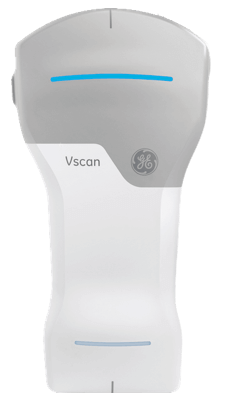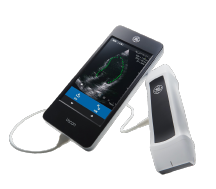
The ability for you to diagnose deep vein thrombosis (DVT) quickly and effectively can be beneficial, even lifesaving, for your patients. Blood tests can identify those at risk for this condition, but ultrasound is typically used to help identify the actual presence of a blood clot in a vein.
Standard ultrasound equipment is highly accurate, but traditional ultrasound equipment is not always available in all care settings. Consequently, handheld ultrasound equipment has become a critical tool in helping you quickly identify this condition in a timely way. Using a handheld ultrasound device may speed diagnosis and make it more readily available, reducing patient transport and thus potentially reducing the number of opportunities for patient and staff exposure to contagious diseases, such as COVID-19.
Complementing Standard Ultrasound
When handheld ultrasound is readily available at the bedside, it frees up standard stationary ultrasound equipment for patients who are experiencing a wide variety of other conditions and who need imaging exams on traditional imaging devices.
A 2015 study in JACC Cardiovascular Imaging concluded that “the accurate and immediate decision making allowed by the pocket-size ultrasound examination (PUE) has the potential to exert a significant impact on the current diagnostic strategies for DVT. Positive PUE can make other diagnostic or therapeutic procedures available earlier for the patient without standard ultrasound examination (SUE).”
Aiding Providers
Handheld ultrasound gives clinicians detailed information to make confident decisions about possible therapeutic options. With specific details at their fingertips, they can rule out treatment options that could prove unsuccessful.
Identifying whether a patient has DVT before they leave the hospital can reduce the need for nurses to conduct home visits for those patients who are not able to self-administer the medication. Enabling faster ultrasound procedures at the point of care may also reduce additional patient contact and potential exposure to hospital acquired infection, contagious diseases, or viruses, such as COVID-19.
Making an Impact on Time to Diagnosis
In addition to confident decisions, handheld ultrasound can also help providers make fast diagnoses. Having a handheld unit available during a physical exam may eliminate delays associated with waiting to perform a procedure with a standard ultrasound machine. The ability to render fast diagnoses may help prevent serious problems or complications, including a fatal pulmonary embolism.
It’s also possible for other healthcare providers, such as nurses, to conduct scans with handheld ultrasound. By training nurses in the use of this technology, healthcare organizations would be able to increase the number of clinicians who can conduct quick diagnostic exams on patients who show symptoms of DVT. A study published in Thrombus in 2016, found that “given their crucial role throughout the DVT pathway, nurses represent a key source of potential operational improvement. The immediate availability of portable ultrasound devices raises the possibility of potentially conducting ultrasound scans for every patient suspected of DVT, without needing to wait for blood test results.” Expanding training in handheld ultrasound to nurses would greatly increase the number of healthcare professionals who could use the technology to help diagnose DVT and other health conditions.




